One helluva ride
Labels: Stung Treng, Tbeng Meanchey
Cambodia - Temples, Books, Films and ruminations...
Labels: Stung Treng, Tbeng Meanchey
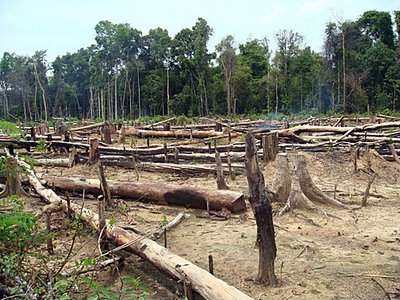 The smoldering cut forest surrounding Veal Veng village, part of the extensive Prey Lang Forest region
The smoldering cut forest surrounding Veal Veng village, part of the extensive Prey Lang Forest regionLabels: Preah Vihear, Stung Treng, Tbeng Meanchey
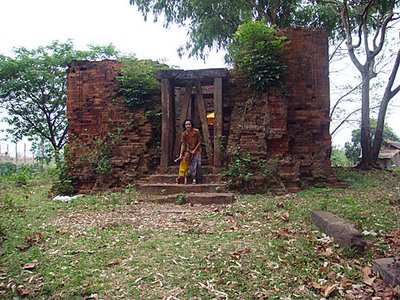 A Khmer family at Prasat Preah Ko in Thala Borivat
A Khmer family at Prasat Preah Ko in Thala Borivat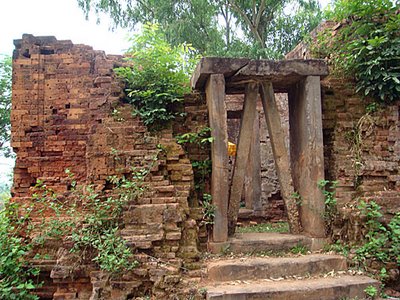 The front entrance, facing east at Prasat Preah Ko
The front entrance, facing east at Prasat Preah Ko 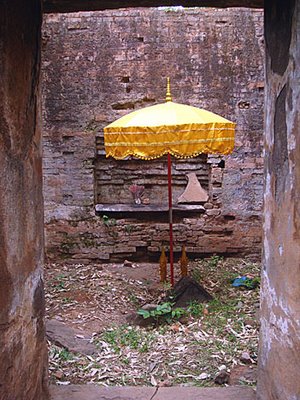 The central shrine of Prasat Preah Ko - you can see the corner of a pedestal buried under the ground
The central shrine of Prasat Preah Ko - you can see the corner of a pedestal buried under the groundLabels: Prasat Preah Ko, Stung Treng, Thala Borivat
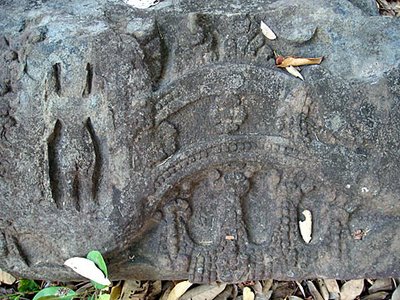 The outline of a figure on the left and the lintel elements of the 7th century at Prasat Phnom Theat
The outline of a figure on the left and the lintel elements of the 7th century at Prasat Phnom Theat Labels: Prasat Phnom Theat, Prasat Pros, Prasat Theat Ba Daeum, Stung Treng
Labels: Preah Vihear, Stung Treng
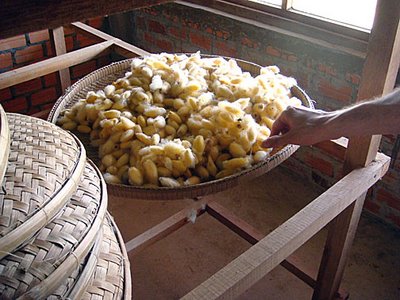 These are cocoons of naturally produced yellow silk collected from the silkworms and ready for boiling
These are cocoons of naturally produced yellow silk collected from the silkworms and ready for boiling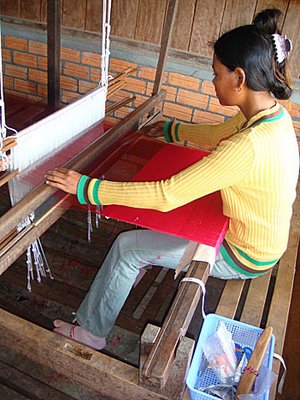 At Mekong Blue they have over 30 looms to make their quality silk products. Here Srey Mao takes time off her lunchbreak to show us how they work.
At Mekong Blue they have over 30 looms to make their quality silk products. Here Srey Mao takes time off her lunchbreak to show us how they work.Labels: Mekong Blue, Stung Treng
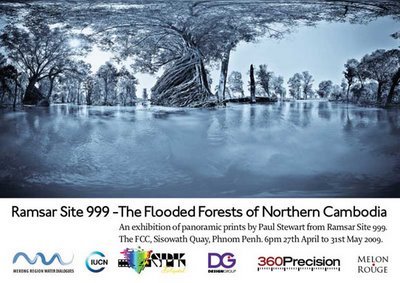 The designated wetland regions of Cambodia are under threat from all directions. One of two key sites is located on the Mekong River between Stung Treng and the border with Laos, this is called Ramsar Site 999. The biodiversity of the area is rich in fish, birds, mammals, reptiles and vegetation. Along this stretch, the river is fast flowing with deep pools and numerous channels running between rocky and sandy islands; the seasonal variation in water height is 10 metres. It was designated as a Ramsar Site in 1999 because it contains a unique seasonally flooded riverine forest habitat, and is also home to the Irrawady Dolphin and the Mekong Giant. More than 10,000 people live in or close to the Ramsar Site, and most of them rely on the Mekong for their food and livelihoods. Fish is the major source of protein and is also harvested to be sold. Many other species are also used, such as snails, crabs and frogs for food, and various plants for fuel wood, building, crafts and medicine. The regular flooding of the river supports rice farming using paddies. An exhibition of fine art panoramic prints by Paul Stewart from Ramsar Site 999 will take place between 27 April thru til 31 May at the FCC in Phnom Penh. Take the time to see the endangered Cambodian wetlands for yourself.
The designated wetland regions of Cambodia are under threat from all directions. One of two key sites is located on the Mekong River between Stung Treng and the border with Laos, this is called Ramsar Site 999. The biodiversity of the area is rich in fish, birds, mammals, reptiles and vegetation. Along this stretch, the river is fast flowing with deep pools and numerous channels running between rocky and sandy islands; the seasonal variation in water height is 10 metres. It was designated as a Ramsar Site in 1999 because it contains a unique seasonally flooded riverine forest habitat, and is also home to the Irrawady Dolphin and the Mekong Giant. More than 10,000 people live in or close to the Ramsar Site, and most of them rely on the Mekong for their food and livelihoods. Fish is the major source of protein and is also harvested to be sold. Many other species are also used, such as snails, crabs and frogs for food, and various plants for fuel wood, building, crafts and medicine. The regular flooding of the river supports rice farming using paddies. An exhibition of fine art panoramic prints by Paul Stewart from Ramsar Site 999 will take place between 27 April thru til 31 May at the FCC in Phnom Penh. Take the time to see the endangered Cambodian wetlands for yourself.Labels: Ramsar Site 999, Stung Treng
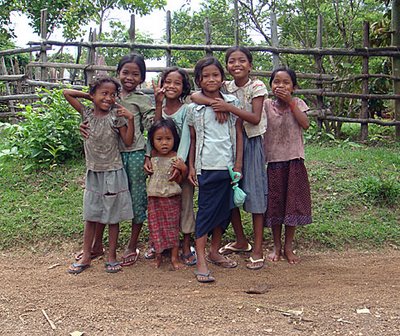 Happy group of girls in the village of Chhvang on the trip from hell between Stung Treng and Tbeng Meanchey
Happy group of girls in the village of Chhvang on the trip from hell between Stung Treng and Tbeng MeancheyLabels: Kratie, Preah Vihear, Stung Treng